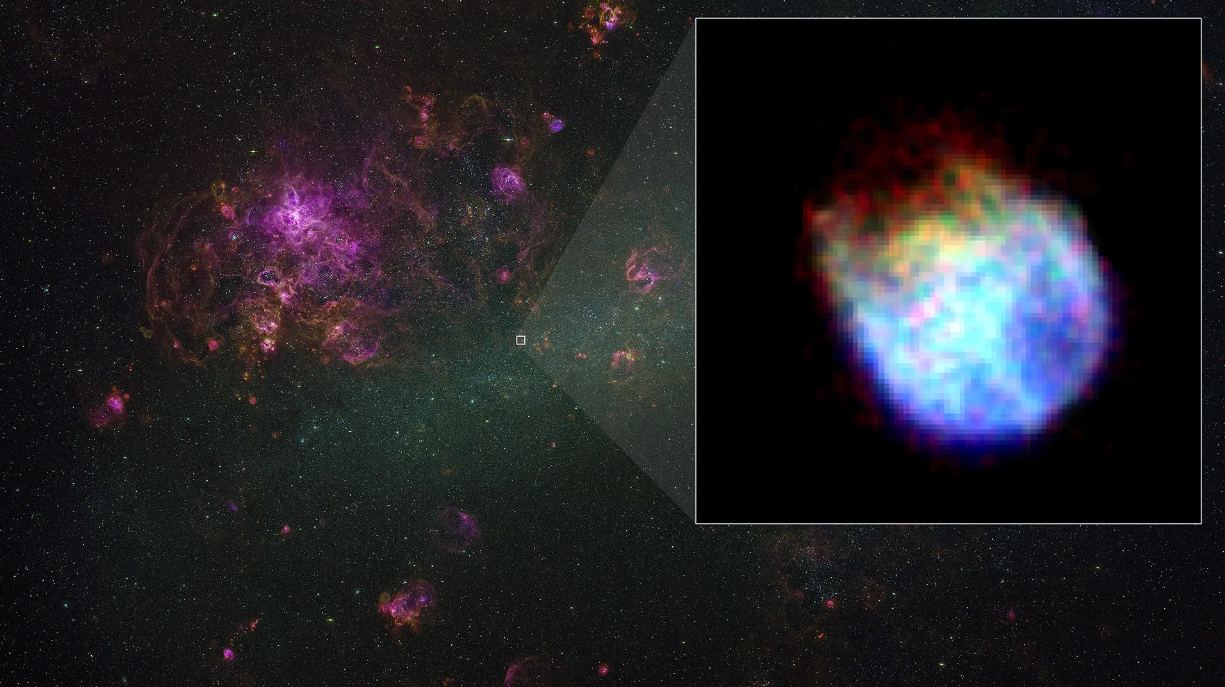XRISM, the X-ray Imaging and Spectroscopy Mission, is a joint NASA/JAXA mission led by JAXA. The X-ray space telescope began its mission in low-Earth orbit on September 6th, 2023. Science operations won’t begin until later this year, but the satellite’s science team has released some of the telescope’s first images.
XRISM is a stop-gap telescope. Our existing X-ray observatories, XMM Newton and Chandra, are aging, and their missions will end soon. Their replacement, the European Advanced Telescope for High Energy Astrophysics (ATHENA), won’t launch until 2035, leaving a years-long gap with no X-ray telescope coverage. Japan’s Hitomi X-ray observatory was meant to succeed XMM Newton and Chandra, but it failed a few weeks after launch.
Even though XRISM is intended as a fill-in mission, it’s still very powerful and will deliver robust scientific observations.
“XRISM will provide the international science community with a new glimpse of the hidden X-ray sky,” said Richard Kelley, the U.S. principal investigator for XRISM at NASA’s Goddard Space Flight Center in Greenbelt, Maryland. “We’ll not only see X-ray images of these sources but also study their compositions, motions, and physical states.”
Some new images from the telescope show just how powerful this ”stop-gap’ observatory is.
XRISM has two instruments: Resolve and Xtend. Resolve is a microcalorimeter spectrometer, a cryogenic instrument that’s kept at barely above absolute zero. When a photon hits it, it warms the detector by a specific amount related to its energy. “By measuring each individual X-ray’s energy, the instrument provides information previously unavailable about the source,” NASA explains.
Xtend is an X-ray CCD camera with a higher resolution than its predecessor on the failed Hitomi observatory.
The first image from XRISM at the top of the page is of a supernova remnant (SNR) in the Large Magellanic Cloud called N132D. The remnant is almost unseeable in the optical light image but is bright in X-rays. XRISM is a spectrometer and it created the most detailed X-ray spectrum of N132D ever.

The progenitor star was about 15 times as massive as the Sun and exploded when it depleted its hydrogen and collapsed in on itself. The wreckage, the supernova remnant, is about 3,000 years old and is still expanding. These remnants are important because they spread heavy elements throughout the galaxy, heat the interstellar medium, and accelerate cosmic rays. Their shockwaves can even compress nearby gas and trigger new star formation.
Brian Williams, NASA’s XRISM project scientist at Goddard, explained how XRISM will help us understand SNRs.
“These elements were forged in the original star and then blasted away when it exploded as a supernova,” said Williams. “Resolve will allow us to see the shapes of these lines in a way never possible before, letting us determine not only the abundances of the various elements present but also their temperatures, densities, and directions of motion at unprecedented levels of precision. From there, we can piece together information about the original star and the explosion.”
Measuring the chemical composition of objects is important in astrophysics, and XRISM is proving to be even better than expected at that task.
“Even before the end of the commissioning process, Resolve is already exceeding our expectations,” said Lillian Reichenthal, NASA’s XRISM project manager at Goddard. “Our goal was to achieve a spectral resolution of 7 electron volts with the instrument, but now that it’s in orbit, we’re achieving 5. What that means is we’ll get even more detailed chemical maps with each spectrum XRISM captures.”
Xtend, XRISM’s X-ray imager, plays an important role in the observations. Its large field of view means it can observe an area about 60% larger than the full Moon. The science team released an Xtend X-ray image of Abell 2319, a nearby galaxy cluster that’s the object of frequent study.

The purple in the image is gas that is leftover from billions of years of star birth and death. XRISM will tell astronomers what elements are present and how abundant they are, especially elements heavier than hydrogen and helium, called ‘metals’ in astronomy. These XRISM observations will help us understand how the Universe has become enriched in metals over its 13+ billion-year history.
Astronomers have observed Abell 2319 with the Chandra and identified different substructures in the intracluster medium (ICM.) They found cold fronts between masses of cooler and warmer gases and even finer substructures within the fronts. It all hints at more complexity than previously thought, triggered by mergers between galaxies and groups and interactions with the cluster’s AGN. Abell 2319 is currently undergoing a major merger event, and since XRISM is more powerful than Chandra, it should reveal even more details about the merger.
But alongside the success represented by these first images, XRISM is facing its first challenge. An aperture door that protects the Resolve detector before launch hasn’t opened. This means that photons below 1,700 electron volts can’t reach the detector. XRISM personnel have made several attempts to open it but haven’t yet been successful. If it remains closed, then the mission won’t detect photons below 1,700 electron volts, while it’s designed to measure photons as low as 300 electron volts. This problem, however, doesn’t affect Xtend, and the XRISM team is still working on a solution.
Though the XRISM mission is primarily a partnership between NASA and JAXA, the ESA and the Canadian Space Agency are also involved.

“It’s so exciting to see XRISM already carrying out such marvellous scientific observations, even though it is not yet fully calibrated,” says ESA Director of Science Carole Mundell. “It shows the potential this mission offers to our science communities for groundbreaking discoveries in the study of the most energetic phenomena in the Universe.”

